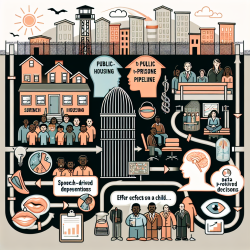Introduction
The rapid growth of scientific literature poses a significant challenge for practitioners aiming to stay updated with the latest research trends. The study titled "An Analysis of the Abstracts Presented at the Annual Meetings of the Society for Neuroscience from 2001 to 2006" offers valuable insights into the evolving landscape of neuroscience research. By understanding these trends, practitioners can enhance their skills and adapt to emerging methodologies in their fields.
Key Findings from the Research
The analysis of abstracts from the Society for Neuroscience (SFN) annual meetings reveals several noteworthy trends:
- Geographical Concentration: A significant portion of neuroscience research is concentrated in the northeastern United States, with cities like New York and Boston leading in terms of author representation.
- Transient Research Population: Approximately 66% of authors appear only once in the six-year span, indicating a high turnover rate and a transient research population.
- Research Focus Shift: There is a notable growth in behavioral/systems neuroscience, while cellular/molecular neuroscience has seen a decline over the same period.
Implications for Practitioners
Practitioners can leverage these findings to improve their skills and adapt to the changing research landscape:
- Stay Informed: Keeping abreast of geographical hubs of research can help practitioners identify potential collaborations and networking opportunities.
- Adapt to Trends: Understanding the shift towards behavioral/systems neuroscience can guide practitioners in updating their methodologies and focusing on areas with growing interest and funding.
- Embrace Technology: The use of natural language processing and data analysis techniques in the study highlights the importance of integrating technology into research practices to manage large volumes of data effectively.
Encouragement for Further Research
Practitioners are encouraged to delve deeper into the original research to gain a comprehensive understanding of the methodologies and outcomes. This can foster a more informed approach to their practice and open up new avenues for innovation and collaboration.
To read the original research paper, please follow this link: An Analysis of the Abstracts Presented at the Annual Meetings of the Society for Neuroscience from 2001 to 2006.










